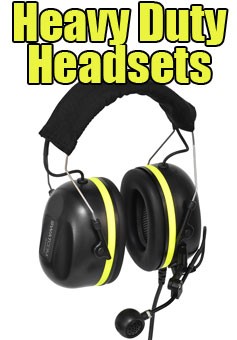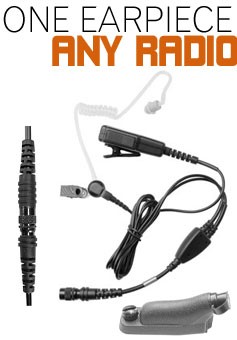
We've all experienced it - miles upon miles of orange cones lining the road, with not a soul in sight. These scenes often spur a sense of bewilderment and curiosity, leading us to wonder about the behind-the-scenes mechanisms that make it all work.
At the heart of these operations lies an intricate network of communication, vital to ensuring the safety and efficiency of traffic control.
The individuals working diligently behind the cones rely heavily on two-way radios to coordinate their efforts, manage traffic flow, and maintain a safe environment for both workers and drivers. This makes selecting the right two-way radio for the job of utmost importance.
The Importance of Continuous Communication in Road Work
Communication is at the core of any successful operation, particularly in sectors where safety is paramount, such as road repair and construction. Workers engaged in these tasks often find themselves in potentially hazardous situations, where incidents can unfold rapidly and unexpectedly.
Therefore, it is critical that road workers maintain open channels of communication at all times. This allows for quick dissemination of information, instant alerts about potential dangers, and timely coordination of responses to any incidents that may arise.
The use of a reliable two-way radio becomes invaluable in such scenarios, ensuring that every member of the team is always in sync, thus significantly reducing the risk of accidents. In essence, continuous communication in road work isn't just about efficiency; it's a vital aspect of worker safety.
The Necessity of Professional Grade Two-Way Radios
When it comes to traffic control and road work, the use of professional grade two-way radios is non-negotiable. Not only do these devices need to allow for communication over extended distances, taking into account the vast spread of most road work sites, but they must also be rugged enough to withstand the often harsh environments in which they are deployed.
Road work takes place in all sorts of weather conditions – from intense heat to heavy rain – and radios need to be resilient against these challenges. Additionally, these devices often get dropped, knocked, or even run over during the busy and unpredictable nature of road work, hence durability is a key factor to consider.
In essence, professional grade two-way radios, with their long-range communication capabilities and robust design, are the lifeline of continuous and reliable communication in the challenging environment of traffic control and road work.
Noise Cancellation and Proximity Communication
In the bustling environment of traffic control and road work, the capability of a two-way radio to mitigate background noise is crucial. These operations are typically conducted next to noisy roads, making effective communication a challenge.
The best two-way radios feature noise-cancelling technology to ensure clarity in every transmission, even amid the constant roar of traffic. However, this should not come at the expense of proximal communication.
Workers often need to converse with colleagues who are nearby, hence radios should still permit this while blocking out the ambient noise. In essence, the ideal two-way radio balances superior noise cancellation and the facilitation of close-quarters dialogue, ensuring optimal communication in the demanding setting of traffic control and road work.
Essential Features of Compatible Accessories
When it comes to accessories designed for two-way radios used in road work and traffic control, compatibility with the radio units is crucial. However, suitability for the challenging working conditions on the roads must also be taken into account. Acoustic tubes, for instance, are not an ideal choice since they can easily get dirty and hinder reliable communication.
Instead, headsets with active noise-cancelling technology offer a more effective solution. These devices allow the user to remain aware of their surrounding sounds, yet when the noise level escalates too high, they prevent it from affecting the user's hearing. In essence, the best accessories for two-way radios in road work and traffic control should not only be compatible but also robust and purpose-built for the specific demands of the job.
-

Licenced Two Way Radio (Kirisun DP405) with Earpiece
The Kirisun DP405 emerges as a comprehensive solution for professional comm...
-

Licence Free Two Way Radio (Kirisun DP405S) with Earpiece
Discover the Kirisun DP405S, a license-free digital 446 radio with 16 pre-p...
-

Kirisun DP405 / DP405S 6 Bank Charger
Streamline your communication management with the Multi-Unit Charger, a mus...

























